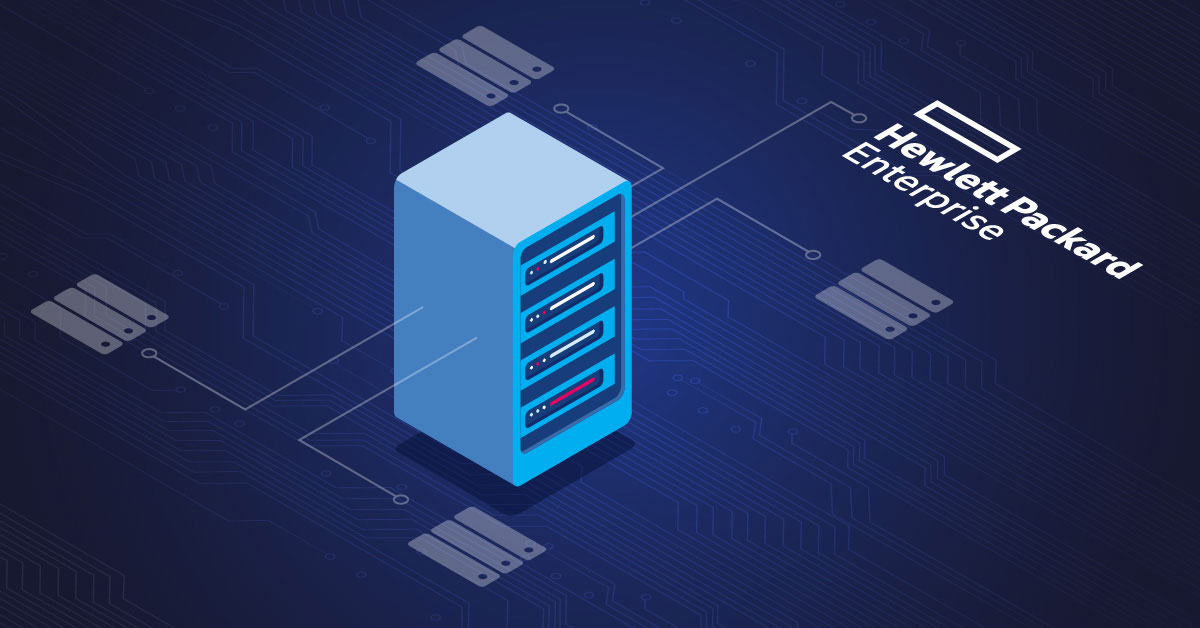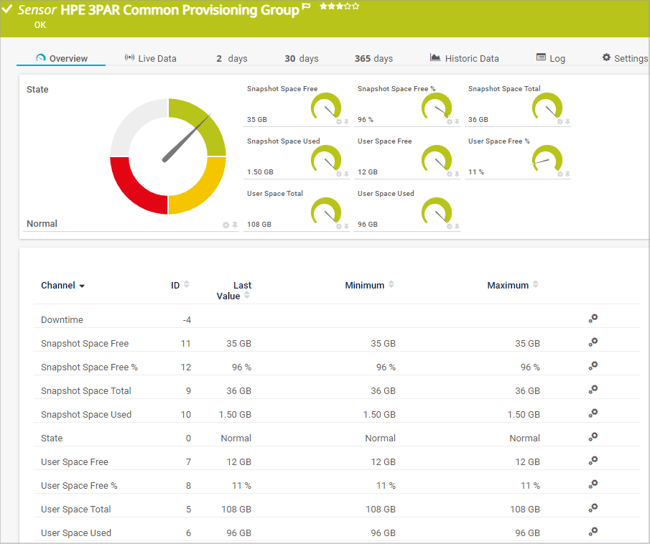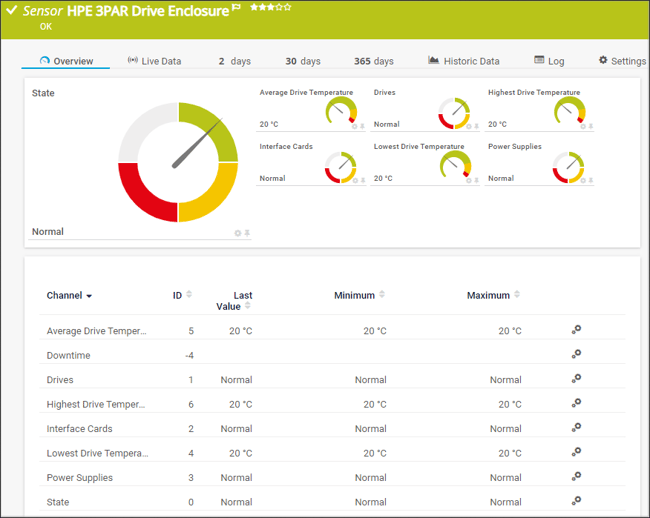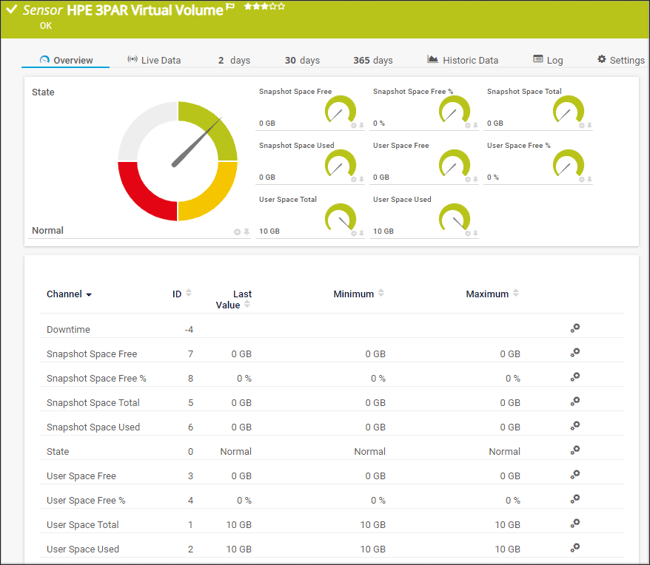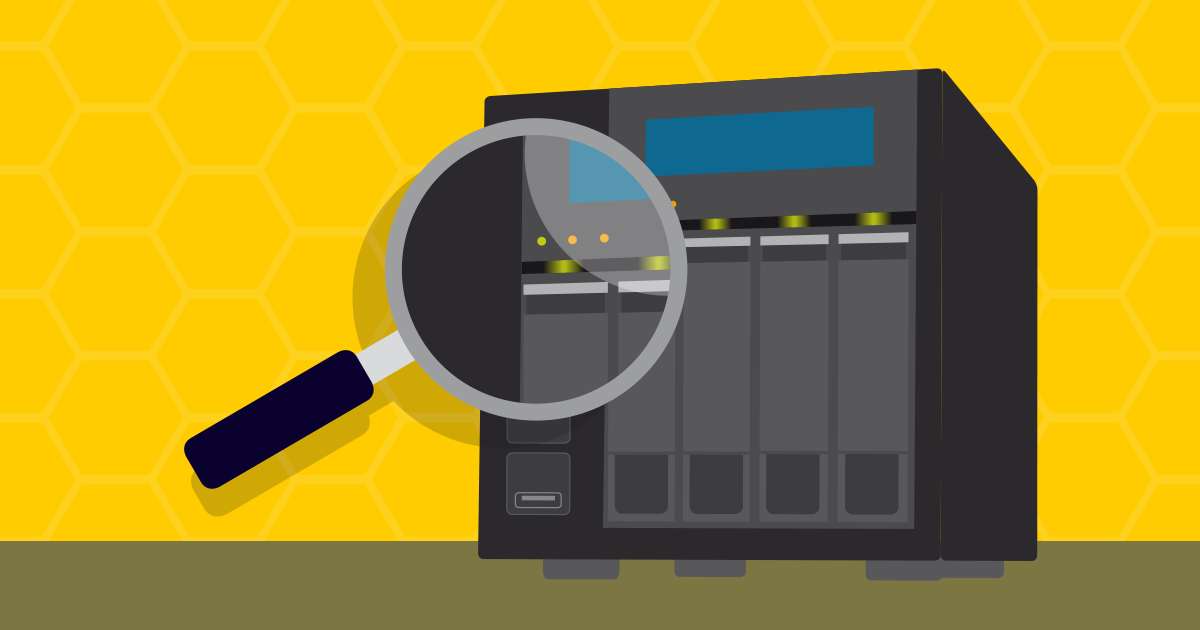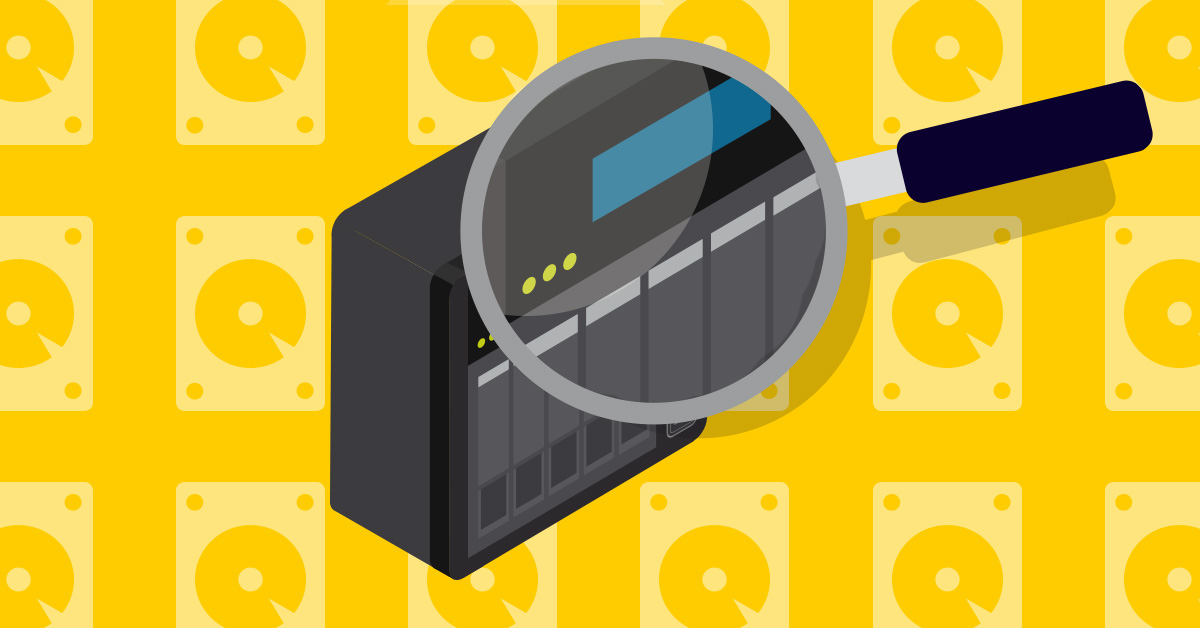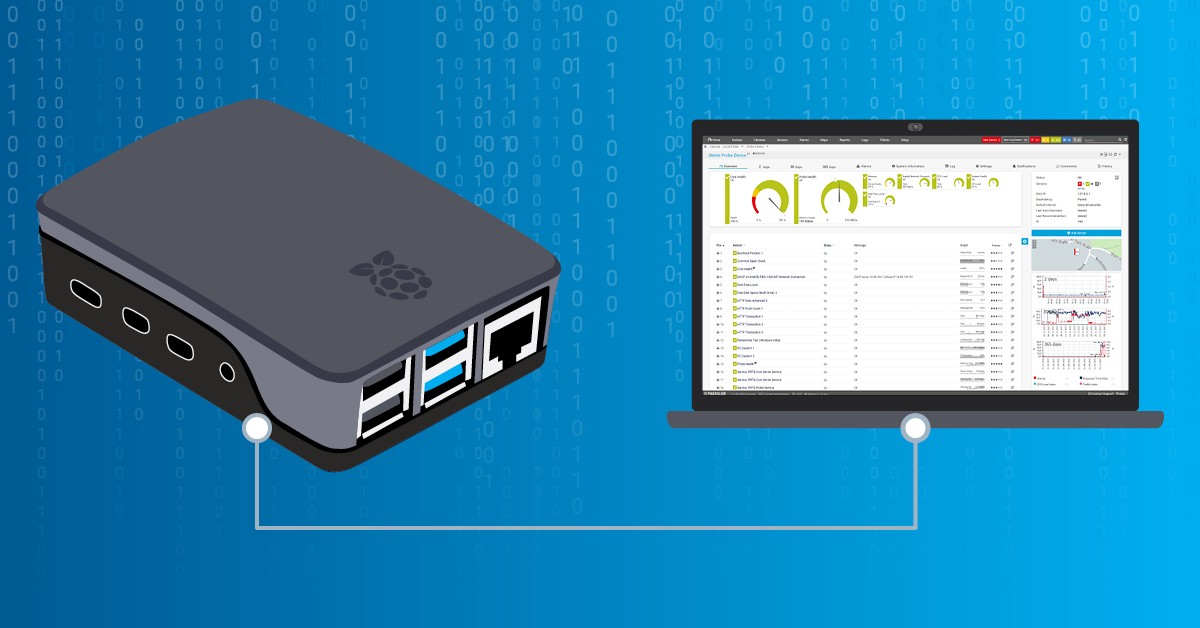To avoid negative business impact due to storage problems or failures, all storage components must be monitored around the clock. This means monitoring both hardware and software, as well as availability and performance.
Most of the components of modern data storage have their own monitoring system built in. However, it quickly becomes clear that a central monitoring solution is required to maintain a central overview of the entire storage system with all its elements and tools.
For this reason, Paessler PRTG provides native sensors for monitoring storage systems from different manufacturers. In this article, I will introduce you to the HPE 3PAR sensors in more detail.
HPE 3PAR Common Provisioning Group Sensor
This sensor monitors the capacity of a Common Provisioning Group (CPG) - which means a virtual pool of logical disks that allows up to 64 volumes - on an HPE 3PAR storage system. To add this sensor, ensure you have added the required HPE 3PAR credentials to a device higher in the PRTG object hierarchy, for example: in the settings of the parent device. The sensor supports the IPv6 protocol, has a very low performance impact and uses lookups to determine the status values of one or more channels. This means that possible states are defined in a lookup file. You can change the behavior of a channel by editing the lookup file that the channel uses. For details, see section Define Lookups.
The HPE 3PAR Common Provisioning Group sensor also includes the following channels, which enable you to get more details:
| Channel | Description |
| Logical Space Free | Free logical space in gigabytes |
| Logical Space Free % | Free logical space in percent |
| Logical Space Total | Allocated logical space in gigabytes |
| Logical Space Used | Space that is already in use in gigabytes |
| Snapshot Space Free | Free snapshot space in gigabytes |
| Snapshot Space Free % | Free snapshot space in percent |
| Snapshot Space Total | Allocated snapshot space in gigabytes |
| Snapshot Space Used | Snapshot space that is already in use in gigabytes |
| State* | The overall state of the CPG |
| User Space Free | Free user space in gigabytes |
| User Space Free % | Free user space in percent |
| User Space Total | Allocated user space in gigabytes |
| User Space Used | User space that is already in use in gigabytes |
*This channel is the primary channel by default and can be changed to any other channel.
For more information about the HPE 3PAR Common Provisioning Group sensor, have a look at our manual.
HPE 3PAR Drive Enclosure Sensor (BETA)
The HPE 3PAR Drive Enclosure sensor monitors a drive enclosure of a HPE 3PAR storage system and also requires credentials for HPE 3PAR in the settings of a device that is higher in the object hierarchy.
Besides the general status of the drive enclosure, this sensor additionally informs you in the channels about:
- The average drive temperature
- The overall state of the drives
- The highest temperature of all drives in the drive bay in degrees Celsius
- The overall state of the interface cards
- The lowest temperature of all drives in the drive bay in degrees Celsius
- The overall state of the power supplies
You can find more details in this manual.
HPE 3PAR Virtual Volume Sensor (BETA)
You can use the HPE 3PAR Virtual Volume sensor to monitor the capacity of a virtual volume on an HPE 3PAR storage system. Please also remember with this sensor that it requires credentials for HPE 3PAR in settings for a device that is higher in the object hierarchy.
In contrast to monitoring logical volumes, this sensor monitors virtual volumes, and provides the following details:
- The overall state of the virtual volume
- The free snapshot space in gigabytes or percent
- The reserved snapshot space in gigabytes
- The snapshot space that is already in use in gigabytes
- The total space in gigabytes
- The total free space in gigabytes or percent
- The total reserved space in gigabytes
- The total space that is already in use in gigabytes
- The free user space in gigabytes or percent
- The reserved user space in gigabytes
- The user space that is already in use in gigabytes
We've provided a manual entry with further details.
Related information
If you are interested in what we are working on or will work on in the future, have a look here:

On this site we are also collecting feedback via surveys to help us develop some new features and we would love to get your opinions. Of course we are also happy about every comment you leave us under this article!
 Published by
Published by 